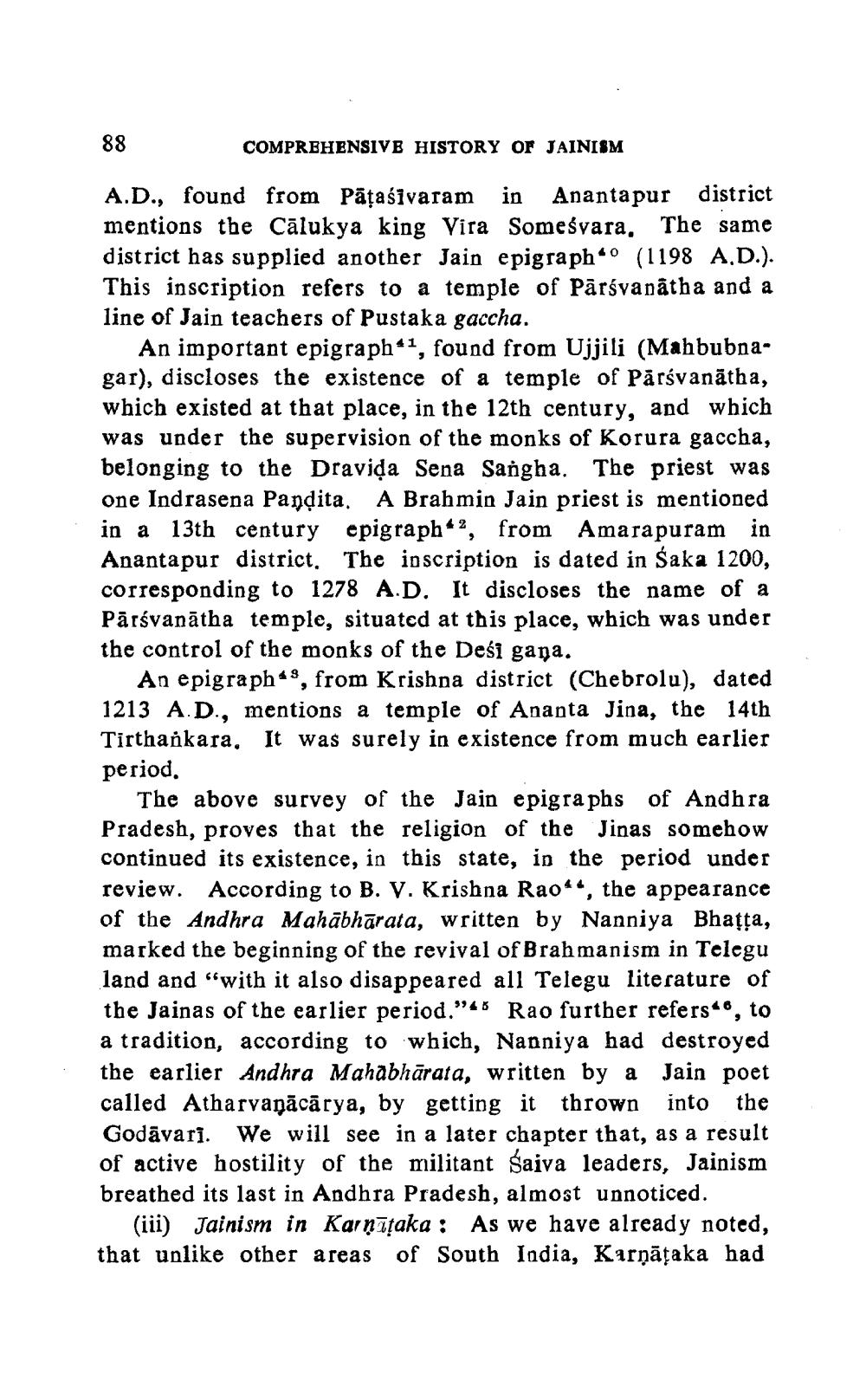________________
88
COMPREHENSIVE HISTORY OF JAINISM
A.D., found from Pāțaśīvaram in Anantapur district mentions the Cālukya king Vira Someśvara, The same district has supplied another Jain epigraph (1198 A.D.). This inscription refers to a temple of Pārsvanātha and a line of Jain teachers of Pustaka gaccha.
An important epigraph*1, found from Ujjili (Mahbubnagar), discloses the existence of a temple of Pārsvanātha, which existed at that place, in the 12th century, and which was under the supervision of the monks of Korura gaccha, belonging to the Dravida Sena Sangha. The priest was one Indrasena Pandita. A Brahmin Jain priest is mentioned in a 13th century epigraph*2, from Amarapuram in Anantapur district. The inscription is dated in Śaka 1200, corresponding to 1278 A.D. It discloses the name of a Pārsvanātha temple, situated at this place, which was under the control of the monks of the Desi gana.
An epigraph*s, from Krishna district (Chebrolu), dated 1213 A.D., mentions a temple of Ananta Jina, the 14th Tirthankara. It was surely in existence from much earlier period.
The above survey of the Jain epigraphs of Andhra Pradesh, proves that the religion of the Jinas somehow continued its existence, in this state, in the period under review. According to B. V. Krishna Rao44, the appearance of the Andhra Mahābhārata, written by Nanniya Bhațța, marked the beginning of the revival of Brahmanism in Telegu land and "with it also disappeared all Telegu literature of the Jainas of the earlier period."'45 Rao further refers 6, to a tradition, according to which, Nanniya had destroyed the earlier Andhra Mahabhārata, written by a Jain poet called Atharvaņācārya, by getting it thrown into the Godāvari. We will see in a later chapter that, as a result of active hostility of the militant saiva leaders, Jainism breathed its last in Andhra Pradesh, almost unnoticed.
(iii) Jainism in Karnataka : As we have already noted, that unlike other areas of South India, Kurņāțaka had




